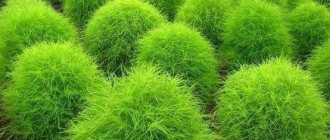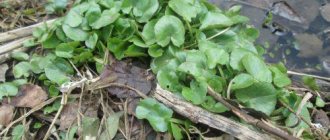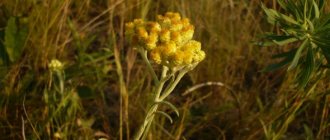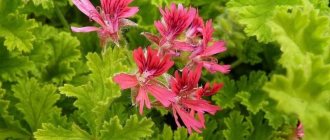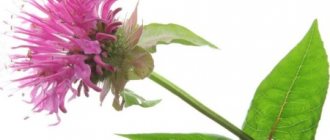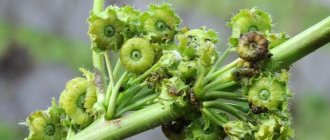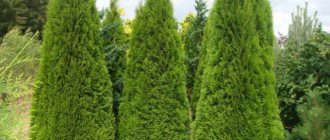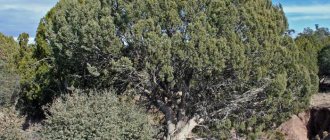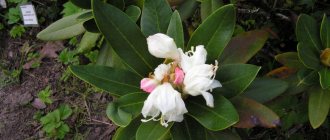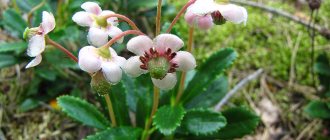Diseases and parasites
The budra plant gets sick when grown at home. And pests (aphids, whiteflies) attack the flower if it does not receive the required amount of nutrients. An environment that is too hot is an excellent environment for spider mites to appear. If you do not follow the rules of watering (overdo it with water), and also do not provide ventilation to the bud, then it will be affected by powdery mildew.
| Growing | The plant can be grown in open ground and at home in a pot. Easy to care for |
| Humidity | It loves moisture, so during the spring-summer period it is necessary to constantly water it. In winter, carry out the procedure once a week. |
| Feeding and pruning | Active growth of the crop begins in the spring. Feeding is required monthly from April to August. You can use complex fertilizers intended for indoor plants. In autumn and winter, you can fertilize once every two months or do without this procedure altogether. Trimming should be done before the crop enters the active growth phase. |
| Flowering period | It starts early and lasts from May to the end of August. |
| Landing, transplant | For planting, petioles 15 cm long, without flowers, are suitable. They need to be placed in water or wet sand. After a week, roots will begin to appear and can be planted in a pre-prepared soil mixture. Budra will take root in any pot, regardless of shape and depth. Budra should be replanted only when necessary. If the flower is sick or its growth has stopped. This procedure is tolerated well. If there are no problems with growth and development, then there is no need to touch it. |
| Reproduction | By cuttings. |
| Pests | Aphids, whiteflies, spider mites. |
| Diseases | Powdery mildew. |
Growing
Budra (popularly called catnip) can grow in the garden and at home. Regardless of the place of growth, the growing rules are the same. So, the plant loves light, but direct sunlight should be avoided. Therefore, the optimal place for growing it is near the window, from where diffused bright light will fall on the bud.
Growing and caring for a plant includes: watering, ensuring the correct temperature and humidity levels, applying fertilizer, pruning, replanting.
In summer, a houseplant needs a temperature of 18 to 25 degrees Celsius, and in winter this figure can be reduced to 10 degrees. Watering the crop in winter is enough only once every 7 days, but in the spring-summer period the plant needs more water, otherwise it will dry out. In extreme heat, the container of catnip can be placed in a container of water. In winter, when the heating is on, and in the warm season, budra flowers and leaves need to be sprayed, because dry air is contraindicated for it.
You can fertilize the plant with special fertilizers for indoor flowers and it is better to start doing this in the spring - for further growth, the glecoma needs strength and nutrition. It is necessary to choose a fertilizer that contains a low nitrogen content - this way the flower will grow less. The procedure should be carried out monthly during the period April-August. But you can prepare the fertilizer yourself. To do this, you need to mix leaf soil, turf, humus in a 1:1 ratio and add 1/2 part of sand. In winter and autumn, feed the plant once every two months, or you can completely abandon the procedure for this time.
In summer, the budra should be placed in a well-ventilated place. A balcony is well suited for these purposes. But you just need to avoid direct sunlight. Due to the fact that the plant grows quickly, it must be constantly pruned, but this must be done before it begins to actively grow. The shoots remaining after the procedure can be used for propagation.
Some gardeners prefer to replant budra several times per season. This is one of the mistakes, since the procedure should be carried out only when the first signs of disease appear or the growth of the crop has stopped. In this case, everything goes well - the catnip easily tolerates the procedure and quickly adapts to its new “place of residence.” If everything is in order, then the transplant is unnecessary.
Use in folk medicine
Due to its rich chemical composition, the herb has a lot of useful properties and is used for therapy:
- colds, especially coughing;
- inflamed bladder, liver, gallbladder;
- gout;
- anemia;
- hepatitis A;
- prostatic hyperplasia;
- goiter;
- wounds and ulcers;
- fractures;
- pain syndrome associated with pathologies of the stomach and intestines.
The plant effectively acts as a hemostatic, stimulant and diuretic. There are known cases of using the plant for the prevention of metastases in oncology and liver cirrhosis.
Cautions
Despite the enormous effectiveness in the treatment of many pathologies of the human body, a preliminary consultation with a herbalist or doctor is necessary, and strict adherence to the dose indicated in the prescription before starting to take the drug orally. The duration of use of the funds depends on the disease and its neglect. Basically, the course of therapy takes 10-14 days, after which a ten-day break is needed and the course is repeated.
INTERESTING fact: Cranberries for diabetes, benefits and harms
In case of overdose, the following symptoms can be observed: heart rhythm disturbances, blood clotting disorders, increased salivation, as well as signs of poisoning.
Chemical composition
This healing plant has numerous beneficial properties, which are quite actively used in folk medicine. Description of the beneficial substances that make up catnip: includes saponins, bitter and tannin elements, organic acids, resins, fatty acids, iridoids, triterpenoids, vitamins (including vitamin C), alkaloids, flavonoids, phenolcarboxylic acids, some essential oil.
Beneficial features
The healing properties of the plant are recognized by official medicine in Western countries. But in Russia the medicine is used only as part of folk remedies. The following properties of forest nettle are considered the most valuable:
- Tones and protects the body from the effects of negative external factors.
- Strengthens the immune system, prevents frequent colds and viral diseases.
- Effectively fights various intestinal parasites.
- Helps slow down the development and growth of atypical cancer cells.
- Normalizes digestion, stimulates the secretion of digestive enzymes and the outflow of bile, activates intestinal motility, improves appetite.
- It has a beneficial effect on the cardiovascular system, normalizes blood circulation, prevents the deposition of cholesterol plaques on the walls of blood vessels, and stimulates cardiac activity.
- It has antiseptic, anti-inflammatory, antipyretic, diaphoretic, hemostatic, diuretic properties.
- Stimulates tissue regeneration processes.
- Positively affects the condition of the skin.
- Normalizes metabolic processes.
- Promotes a speedy recovery from pathologies of the respiratory system.
- Helps the body quickly recover after a severe and prolonged illness.
- It has a beneficial effect on the central nervous system, eliminates nervousness, normalizes the psycho-emotional state, prevents depression, improves mental performance, memory and attention.
- It thins mucus and stimulates its removal from the lungs and bronchi.
- It thins mucus and removes it from the nasal and maxillary sinuses.
- Improves visual function.
For women, the plant is also indispensable, since it facilitates menopause, normalizes hormonal levels, and eliminates the unpleasant symptoms of this condition. In addition, dognip increases physical strength and endurance in men.
Flowers can be blue, purple or light blue. The difference between grass is its creeping shoots that spread in all directions from it. It is important to remember that the plant is a poisonous species.
Let's work together to make the unique material even better, and after reading it, we ask you to repost it on a social network convenient for you. net.
Botanical description
It is unlikely that this perennial grass attracted anyone's attention. Outwardly, she is completely unremarkable. In some ways, it can be called a cover plant, since it has creeping roots that produce multiple shoots. An overgrown ivy-shaped bud covers the ground with a green carpet. Its thin stems are no longer than 50 cm. Each has small green leaves. They are located on petioles 2-3 cm long. Leaves growing from the root have longer petioles. Both the stem and leaves of the plant are covered with delicate, thin hairs. Budra flowers are also small and tubular. The color of the petals is most often lilac, but can also be lilac, pinkish, or almost white. They open from July and decorate the plant until the beginning of autumn.
A distinctive feature of budra is its pleasant smell, due to which it is called dog mint or dushmyanka.
